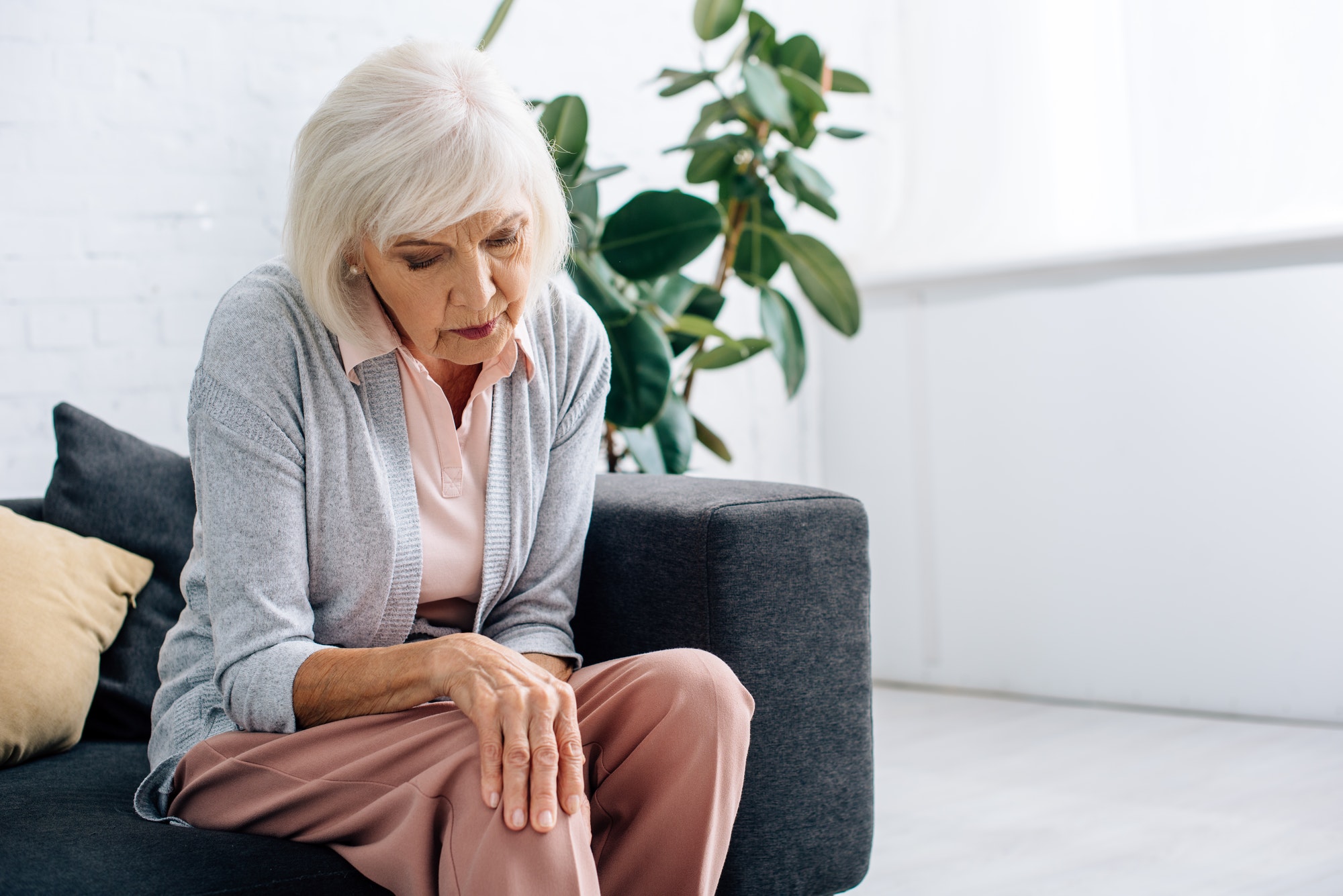
Knee Pain Without Injury | 9 Proven Ways To Get Relief
Knee pain is a very common problem that can affect people of all ages and backgrounds. However, knee pain without injury may seem like an oxymoron because it seems like all knee pain would be caused by some sort of injury.
In fact, there are many causes for non-traumatic knee pain that include arthritis, tendonitis, bursitis, or even labral tears in the hip joint. If you have been experiencing chronic knee discomfort with no clear diagnosis then check out this blog post to learn more about how these types of injuries occur!
While an injury is usually the first thing we think of when we experience knee pain, some people suffer from chronic knee pain without any known cause. This type of knee pain is called “Primary Knee Pain” and it’s thought to make up as much as 15% of all cases of chronic knee pain. So why does this happen? And what can you do about it? Read on for more information!
Contents
- 1 Causes of knee pain without injury
- 2 Symptoms of knee pain without injury
- 3 How to identify and treat knee pain without injury
- 4 What are the long-term effects of untreated knee pain without injury?
- 5 Who is at risk for developing knee pain without injury, and how can they prevent it from happening again in the future
- 6 Final Thoughts
Causes of knee pain without injury

Chronic knee pain without any known cause can be referred to as “primary knee pain” in the medical world. The main culprit is thought to be overuse of your patellofemoral joint, which is caused by an increase in training load.
The exact mechanism that causes this type of joint overload is not completely understood but it’s thought that repetitive microtrauma tears small pieces of the cartilage within your knee joint, leading to inflammation and irritation of the surrounding bursa.
To fully understand the cause of experiencing knee pain without a known injury you first have to know how the knee works.
The knee is a hinge joint that consists of three bones: the femur, tibia, and fibula.
The patella also plays an important role in your ability to move your knee as it sits on top of the end of the femur (thigh bone) acting as a pulley that helps to transmit forces from your quadriceps through the tendon to the tibia below.
The most common types of primary knee pain are known by their location within this region including patellofemoral pain syndrome, meniscal injuries, medial collateral ligament injuries, anterior cruciate ligament injuries, osteoarthritis, or bursitis.
Is my doctor correct?
Unfortunately, sometimes doctors are incorrect with their diagnosis! Just because you haven’t sustained a clear injury doesn’t mean there isn’t something wrong. It’s worth scheduling an appointment with a doctor or physiotherapist if you’re experiencing nagging knee pain.
Symptoms of knee pain without injury

Some of the most common symptoms are a sharp pain when going down a set of stairs, a clicking sound when you bend your knee, and a feeling of the joint being ‘stuck’.
Arthritis may cause knee pain without injury too. This is usually most pronounced with activity, such as going up or down the stairs, getting up from a chair, or climbing. If the pain is continuous then you should consult your doctor.
It’s also important to note that the most common knee injuries are to the tendons. Your knee is used every single day for standing, walking, running, and so on. This makes them prone to wear and tear, particularly if you play sport or do a lot of heavy lifting at work.
One example of this is tendonitis in the patellar tendon (the one connecting the kneecap to the shin), which often causes swelling around the area. Other symptoms include pain that runs along the side of your patella (knee cap).
Tendonitis can be caused by overuse; however, it can also be caused by an underlying condition such as gout making itself known through the pain. If you are affected, it is important to get medical treatment as soon as possible to prevent the tendon from rupturing.
Another common knee injury that can happen without being caused by an external issue is bursitis. The fluid-filled sacs called ‘bursae’ protect the bones and tendons around your joints from friction and wear on each other.
At times they can become irritated or develop small tears which makes them inflamed, particularly if you have arthritis or are overweight. As with tendonitis, bursitis causes swelling accompanied by pain in the surrounding area of the joint.
One way this condition may occur over time is if people with poor posture repeatedly lean up against a hard surface such as a countertop when standing as this puts pressure on the bursa.
While it’s not common, another cause is if someone without injury or arthritis kneels against a hard surface for extended periods of time. This may be the case in people who are homeless, as they can often find themselves sleeping on hard surfaces.
If this happens over an extended period of time, it could irritate the bursa enough to cause swelling and pain – similar to sitting with poor posture for too long at your desk job.
How to identify and treat knee pain without injury

The best way to identify and treat a knee injury is to pay attention to how it feels as you’re doing your daily activities, and not just when you’re exercising.
If you notice that an activity such as climbing stairs or running downhill results in the same pain as when you exercise, then this is a sign that there’s something wrong with the way you run or walk. This could be because of poor posture, which can put more stress on your knees than they need to carry.
Posture problems
It will feel much easier if we neglect certain areas of our body and become lazy about them. For example: does it hurt for somebody to fall asleep on an airplane? No – this is because people use pillows and blankets today to avoid having their necks propped up as they would if they were sitting straight, looking forward.
Posture problems like this are one of the main causes for knee pain without injury (if you can think of another reason it will be in this article). When your knees are not correctly aligned with your hips, then the muscles required to hold them in place become tense – and if muscles are tense, they cannot perform their task properly. And that’s when chronic knee pain sets in.
Stretching exercises or massages won’t solve the issue unless you’re certain that a problem with posture is causing some form of muscular tension as well. At least until you know for sure what’s causing it, don’t do anything that requires using your legs too much! Your knee joints will thank you for it.
The fact that your knee hurts with no signs of injury can also be a sign of over-supplementation; it’s an indication that your body is making too many compounds known as cytokines (and accompanying inflammatory proteins such as prostaglandins and leukotrienes).
If you’re taking supplements like omega-3 fatty acid, then keep in mind that they also create inflammation throughout your entire body – so if you don’t want the pain to come back, cut down on supplements for a while.
What are the long-term effects of untreated knee pain without injury?

There are some long-term effects that can result from not seeking treatment for your knee injury.
First off, if your knee is in pain you will naturally be experiencing some level of immobility with the joint. Immobility can lead to further wear and tear on already-damaged cartilage. It can also cause muscles to tighten up due to lack of use, which results in additional inflammation throughout the body.
If you are experiencing acute knee pain without injury that lasts for more than one or two weeks, make sure you seek professional medical help right away so it doesn’t turn into a chronic issue.
Who is at risk for developing knee pain without injury, and how can they prevent it from happening again in the future

There are certain people that are more prone to developing knee pain without injury because of their occupation. For example, people that work in manufacturing or delivery are at risk for developing knee tendonitis.
Working on your feet all day long puts pressure on the knees and muscles surrounding them to perform harder than they normally would, which can lead to straining them out.
People who do not take the time each day to stretch (especially the legs) before engaging in physical activity
Overuse injuries can occur when one exercises with fatigued muscles or engages in repetitive movements over a long period of time. Doing something like running too often or too much without stretching beforehand is one way an overuse injury can develop into acute knee pain without injury.
Stretching after exercising should help prevent injuries.
Aggressive sports like football, basketball, and soccer lead to many knee injuries because of the continuous running and quick changes in direction required by the game.
Sports that involve a lot of falling or repeated stopping and starting can also be hard on the knees. Even walking down the stairs the wrong way can cause an injury if you put too much weight on your knees.
Final Thoughts
If your pain is not relieved by rest, ice, and/or medication it may be time to see a doctor. Ask about the possibility of arthritis or gout as well as other causes for knee pain without injury like nerve impingement syndrome.
The most common cause of unexplained knee pain in adults over age 50 is a degenerative joint disease (arthritis). Gout can also cause sudden attacks of severe acute inflammation that leads to excruciatingly painful joints, especially the big toe and knees.
Some types of cancer can lead to lower-back or leg pain so you should speak with your physician if these symptoms are present along with any new onset knee discomfort. It’s important to find out what’s causing this type of chronic pain, just in case it’s a serious underlying condition.
